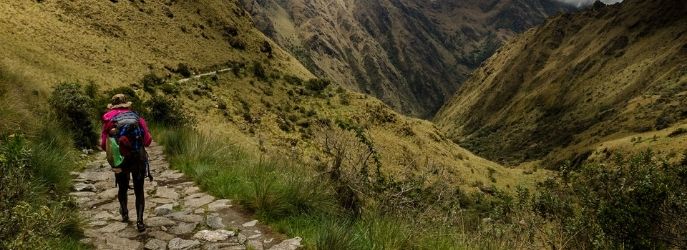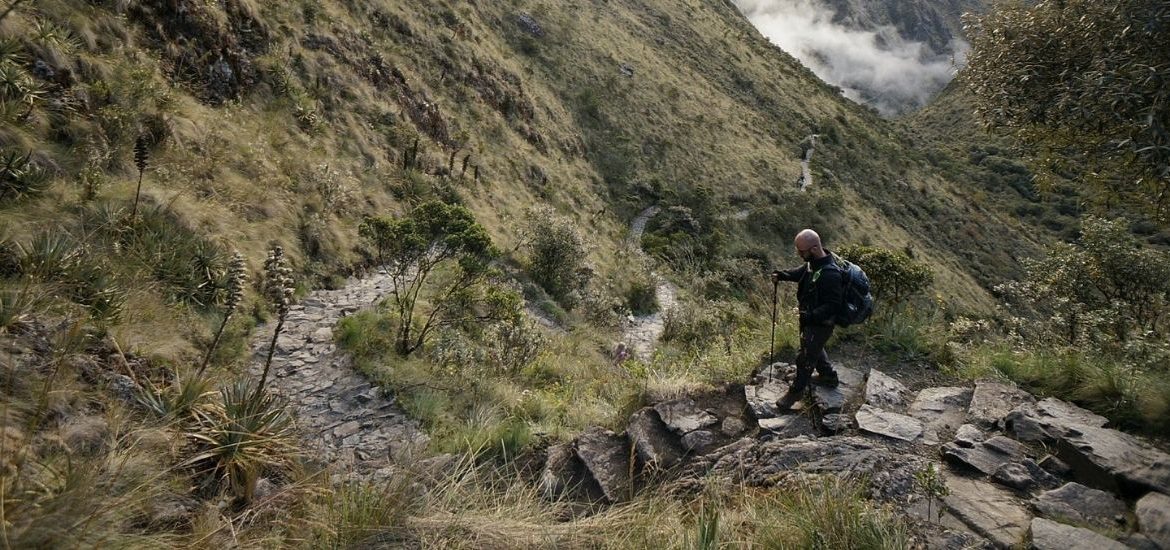In an urge to connect the growing Tahuantinsuyo empire, the Incas implemented a road network system that allowed them to link the Imperial City of Cusco along with other important settlements. The famously known Inca trail isn’t just the bit that allowed passage to Machu Picchu, since it also acted as a bridge between 6 countries.
This impressive road system extended for over 30,000 kilometers granting access, control and communication between the different pre-hispanic settlements incorporated into the Inca Empire. However, the trail network wasn’t solely linked to this powerful civilization but also the ones that predated them.
As everything in humankind history, each process comes from the influence and knowledge of our ancestors, a factor that defined the constant and rapid evolution of the Incas. By taking in and improving these political-administrative features, they managed to control a great part of the continent.
The Qhapaq Ñan started from the very heart of Cusco and spreaded across the mountains of the Andes, the coast and the lush Amazon basin. It is undoubtedly the perfect example of Inca engineering knowledge due to their innovative ways for overcoming the rugged terrain of the highlands on an extensive road system.
Before the Qhapaq Ñan and the Incas
The ancient Peruvians saw the necessity of establishing a system of trails to connect their capitals with their ceremonial centers or other settlements. However, not all of them managed to create an organized road system since the construction was limited due to constant threatening environments between other civilizations and communities.
A part of the pre-Inca trails found in Peru were built by societies with great political complexity as it was the case of the Huari and Tiahuanaco cultures. But when it came to some of the minor trails that derived from the main road, they were established by minor etnic groups.
Before the Incas arrived, the different road systems were exclusively locals and practically limited to certain places and shorter distances. Once the Inca Empire took control over the territory, the trail network grew exponentially.
The Andean Road System in the Inca Era

As the Incas conquered more civilizations, the Qhapaq Ñan needed to be expanded. Having Cusco as the main axis, it allowed control to the different communities that surrounded them that were divided into four regions:
- The northern trail connected the capital with the Chinchaysuyo, which comprised several etnic groups such as the Chincha, Chimu and Pastos.
- The southeast road linked the Collasuyo communities like the Aymara, Colla and Puquina.
- To the southwest with the Contisuyo, occupied by the Conti and Collaguas
- To the orient with the Antisuyo, comprising the native communities of the Amazon.
As we mentioned above, this trail network allowed the economical and political control between different societies and regions. At the same time, it granted their integration within the empire along with cultural and social exchanges, mobilization and trading.
Simply put, the Qhapaq Ñan was the backbone of the Inca society, a symbol of power that expanded long enough to cover Bolivian, Chilean, Ecuadorian, Peruvian, Colombian and Argentine territory.
According to Spanish chroniclers, the greatest road works were ordered by the Inca Pachacutec and were later continued by his successors. As the empire grew, the trail network was also used to mobilize troops and officers, while also maintaining communication between long-distance communities.
For example, the main road that connected Quito with Cusco extended for 2,000 kilometers and the Inca messengers or Chaskis were the ones in charge of delivering news from each point in less than 10 days.
Likewise, food supplies coming from the coast could get to Cusco in 24 hours, traveling more than 200 kilometers. So, efficiently-wise the Andean road network was a complete success during the Inca era, playing an essential role in the space and society organization in an extensive area of the Andes.
The Qhapaq Ñan was mainly composed of roads, roadsides, bridges, sewage pipes, drains, warehouses and more, some things that were perfected overtime including unique construction methods belonging to the trail network only.
These techniques were standardized by the Inca state, which allowed the control of equal conditions along the road network, including the smaller trails that derived from it. That way, they overcame the material limitations of the different regional characteristics of the empire.
The Qhapaq Ñan During Colonization

Due to the massive and strategic extension of the Andean Road System, it was a double-edged sword for the powerful Inca Empire. The Qhapaq Ñan connected long-distance cities like Quito, Cusco and Tucuman, something that was no secret to Spaniards since they used it to invade Peru, Bolivia, Chile and Argentina.
Once the Spanish colonizers took control over the continent, the Inca Trail was left forgotten, leaving it to deteriorate as time passed by and a new era began in the very heart of the Tahuantinsuyo Empire.
However, the Spanish chroniclers complimented the functionality of the Qhapaq Ñan, highlighting the well-maintained system of roads and the travel time efficiency between long-distance locations. Nonetheless, only a part of it was discovered by the Spanish people since they were mainly focused on the gold and silver mines of the fallen empire.
For that and other external factors, they never got to reach some of the most remote settlements of the powerful Quechua community, as is the case of the Inca Trail to Machu Picchu and Choquequirao, another lost city of the Incas.
The Last Inca Trail

Since not all of the Andean Road Network is entirely destroyed, there are some small fractions in Peru that are still alive. When it comes to the minor roads and part of the main trail of the Qhapaq Ñan, Peru holds about 20,000 kilometers of this ancient trail system and an important part of it attracts thousands of visitors to this South American gem.
The most well-preserved part of the Inca Trail extends over 40 kilometers and leads to several Inca ruins just before reaching the famous citadel of Machu Picchu. This is just a small section of what the Inca Trail used to be, though one of the most important.
The Classic Inca Trail comprises a 4-day trek starting from the Km 82 of the Cusco – Quillabamba railway. The trail crosses the rugged setting of the Andes mountains, taking you to altitudes over 4,000 meters above sea level before entering the warm and humid ecosystem of the cloud forest.
This famous route allows you to get to Machu Picchu by the same trail the Incas used during the peak of the Tahuantinsuyo Empire, while also entering by the Sun Gate, the official entrance to the historical sanctuary.
Likewise, it allows you to have a glimpse at their political-administrative organization, as well as their way of living and religion.
If you’d like to join this outstanding adventure, keep in mind that the Inca Trail access is limited to 500 people, including porters, cooks and guides. So, we highly recommend booking this experience at least 6 months in advance.
The Inca Trail is definitely not an easy trek, it has a challenging difficulty and you’ll need to be physically and mentally prepared for it. For more information about this famous trek, check out blog about how to prepare for hiking the Inca Trail.
Although it may seem that Peru is all about the Inca culture, there are some marvelous attractions and destinations that you should know about.
We want you to know the real authenticity of our country and we know exactly how! Check our travel packages and start planning the perfect adventure through these ancient lands.

